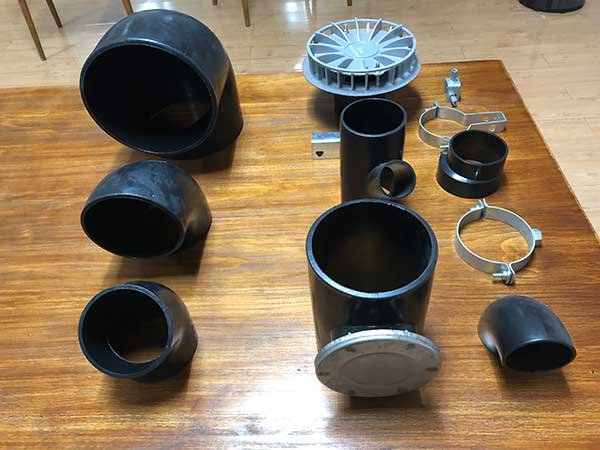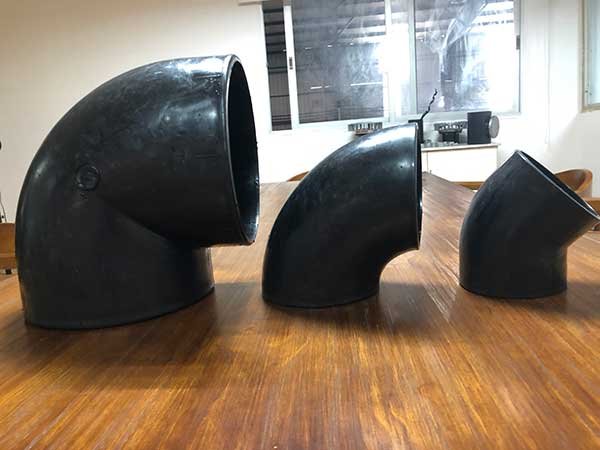HDPE pipe elbows play a crucial role in water supply fittings, primarily responsible for adjusting the pipe’s direction within water and electricity piping systems. Currently, elbows are also involved in various aspects of pipe and line installation. Although seemingly insignificant, these components are essential during the installation process.
HDPE pipe elbow definition
HDPE pipe elbows are fittings used to change the direction of a pipe in a piping system. They are commonly categorized by angle: 45°, 90°, and 180°. Furthermore, non-standard angles such as 60° are also available based on project requirements. Elbows are available in a variety of materials, including cast iron, stainless steel, alloy steel, malleable cast iron, carbon steel, nonferrous metals, and plastics.

Other Names
90° elbow, right angle elbow, air elbow, stamped elbow, pressed elbow, machine elbow, welded elbow, etc.
The bending radius of the HDPE pipe elbow is less than or equal to 1.5 times the pipe diameter. If it is greater than 1.5 times the pipe diameter, it is a bend.
HDPE pipe elbow uses
HDPE pipe elbow is a commonly used connector in pipeline installation. It is used to connect pipes with the same or different nominal diameters to make the pipeline turn at a certain angle. The nominal pressure is 1-1.6Mpa.

Technical requirements for HDPE pipe elbows
- To ensure welding quality, most pipe fittings require beveling, leaving a certain angle and edge. This requirement is quite strict, with regulations on edge thickness, angle, and tolerance. The surface quality and mechanical properties of elbows are essentially the same as those of pipes. To facilitate welding, the steel type of the fittings and the pipes being connected should be the same.
- All pipe fittings are surface treated, with the iron oxide scale on the inner and outer surfaces removed by shot blasting, and then coated with anti-corrosion paint. This is done to meet export needs and facilitate transportation both domestically and internationally to prevent rust and oxidation.
- Packaging requirements: Small pipe fittings for export must be packed in wooden boxes, approximately 1 cubic meter, with the weight of elbows in the box not exceeding 1 ton. Large fittings, such as 24″ elbows, must be packed individually. In addition, the size, steel grade, batch number, and manufacturer’s trademark must be indicated on the packaging.